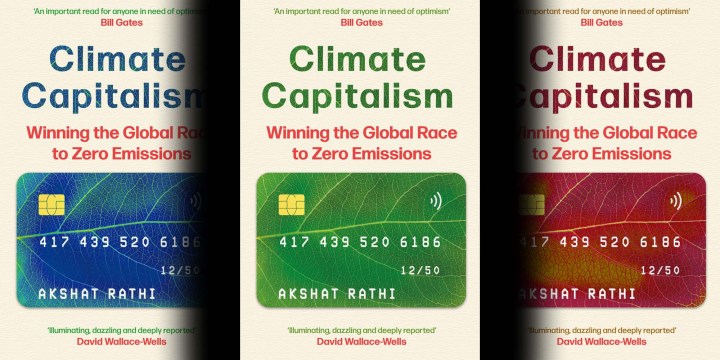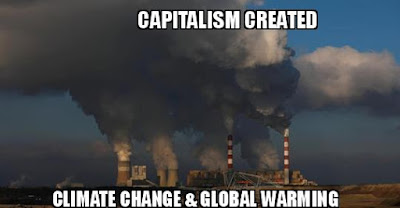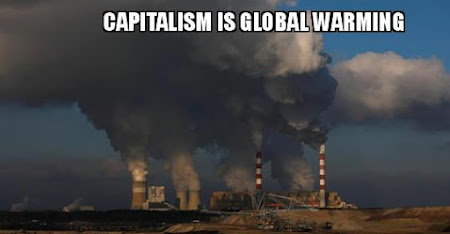BOOK REVIEW
How markets are being used to save the planet

captialism climate
By Ed Stoddard
DAILY MAVERICK
07 Nov 2023
In ‘Climate Capitalism: Winning the Global Race to Zero Emissions’, Akshat Rathi shines a light on an issue of enormous importance: how the energy of capitalism is being unleashed in the fight against climate change. It is an important message for South African policymakers.
‘It’s now cheaper to save the world than destroy it,” is the poignant opening line of Akshat Rathi’s recently published book. This is the heart of the matter and Rathi, a Bloomberg journalist, concisely dissects how business, government and activists are coming together to confront the challenge of climate change through policy, innovation and market mechanisms.
The book also begins with a hilarious anecdote about Donald Trump.
“Donald Trump was campaigning to be the US president and, though he didn’t really care about fighting climate change, he was making pronouncements about ‘clean coal’ technology. I was a science journalist at the time, writing about everything from the birth of stars to the manipulation of atoms. My editor asked me to find out if clean coal was something worth writing about,” Rathi writes.
“What I learned was that Trump mistakenly thought the term referred to coal that could be somehow cleaned after it was mined. Instead, there was a technology called carbon capture and storage, which could trap and bury the CO2 produced when coal is burned…
“What started out as a single article about a flawed marketing slogan aimed at making a political point turned into a year-long investigation into breakthroughs in climate technology.”
It would also lead to this timely book about the race to “net-zero emissions”, an unintended consequence of Trump’s dim-witted grasp of science.
Net zero is a global policy goal aimed at getting the greenhouse gas emissions seen as most responsible for climate change down to zero, if possible, with those that linger reabsorbed by carbon sinks such as forests.
What Rathi chronicles can perhaps be seen as a new phase of capitalism that, having played a very visible hand in the stoking of the climate crisis, is now in a position to undo the damage through innovation and markets – a drive that has growing public and investor support.
“It (climate change) cannot be addressed by the same form of uncontrolled capitalism that is partially responsible for the excess greenhouse gases stuck in the atmosphere. At the same time, reforming capitalism might be the only practical way to get to zero emissions so quickly.
“This book shows why it’s possible to harness the forces of capitalism to tackle the climate problem – and how the work has already begun,” Rathi writes.
“Crucially, capitalism, from the United States to China, is now deeply entrenched. There’s not one ‘utopian’ country in the world where it has been successfully replaced by an economic system that solves climate change.
“Even if you think the best option is to overthrow capitalism, there doesn’t seem to be any way that a new system could be put in place within the few decades left to avert catastrophic climate change.”
Rathi’s focus is on initiatives and individuals, some of whom have played an outsized if unsung role in the rise of climate capitalism.
Wan Gang is a case in point.
“Wan Gang’s story is mostly unknown,” Rathi notes. Yet he has been a driving force in the electric vehicle (EV) revolution, which is more commonly associated with the likes of the flamboyant Elon Musk.
“While Musk fought Wall Street’s scepticism and benefited from waves of government subsidies to keep Tesla afloat through turbulent periods, Wan has shown how policy done right can drive technological disruption not just in China, but worldwide.
“Both men are at the forefront of the global project to propel the world from the current economic age into the next – yet it is the lesser known of the two who has had the bigger impact,” Rathi asserts.
As China’s minister of science and technology, the car engineer who cut his teeth in Germany’s towering motoring industry forged policies that “incentivised the creation of hundreds of Chinese companies tied to making electric vehicles”.
“The country now sells more than six million EVs each year… Wan’s policies have also created some of the world’s largest and most valuable companies selling electric vehicles and lithium-ion batteries. And the choices he has influenced haven’t only affected already established Chinese car companies; all big car manufacturers in the world, for whom the largest market globally remains China, have been affected.”
Then there is energy analyst, Fatih Birol, a Turkish national who steered the International Energy Agency (IEA) from its focus on fossil fuels to its embrace of green energy.
Dramatic transition
The transition has been dramatic. After Joe Biden took up residence in the White House in 2021 and committed the US to net-zero emissions by 2050, “… the IEA launched its first fully-fledged look at what such a future would mean for the energy world”.
“The results were worth waiting for. The IEA’s modelling showed that, if the world is serious about keeping warming below 1.5°C, we need to stop the development of new infrastructure to extract fossil fuels. That means no new coal, oil and gas fields from now on.
“It is just the kind of line climate activists need to arm themselves with – utilising the backing of an organisation that was once an ally of fossil fuels.
“Every time an oil and gas company or a government announces a new project, such as when Biden approved the Willow oil project in Alaska, green groups are able to criticise the decision with the full might of not just climate scientists, but also the energy world’s top analytical group,” Rathi writes.
Bill Gates’ funding of climate technologies and his lobbying efforts is the focus of one chapter which shows what can be reaped when the private and public sectors get on the same page – one of many useful lessons in this book for South African policymakers.
Consumer goods giant Unilever’s status as the “world’s most sustainable company” is scrutinised.
“Unilever seems to have found a way of turning corporate social responsibility plans from nice-to-have into the core of its business model. In a world of almost identical consumer goods differentiated only by packaging and branding, Unilever has made doing good a key selling point for consumers and attracting top talent,” Rathi writes.
He also takes readers on Denmark’s clean-energy journey, triggered in the 1970s by the global oil crisis. This put the country well ahead of the curve decades later when the climate crisis soared to the top of the global agenda.
Denmark is also a telling example for South Africa and for politicians such as Minerals and Energy Minister Gwede Mantashe, who sees fossil fuels as a panacea for South Africa’s economic woes (which have mostly been inflicted by his ANC, but that’s another story).
“Denmark’s energy efficiency improvements have made a big impact over the decades. In 2019, the country consumed about 20% less energy in total than it did in 1973, even as its population has grown by 20% and its economy has doubled in size,” Rathi says.
The narrative is peppered with fascinating anecdotes of the science behind the swing to clean energy. Carbon capture and storage – which Trump seemingly believed meant taking a bar of soap to a lump of coal – was first utilised to lift production from ageing oil fields rather than containing greenhouse gas emissions.
Then there is the push for green cement – critical, as the making of this vital industrial product accounts for about 8% of global emissions. It turns out that the secrets of green cement are as unyielding as a concrete slab.
“Cement as a material is… quite hard to study scientifically. Any two batches of cement are not chemically identical. It’s also amorphous, which means its constituent atoms are not well structured…
“Crucially, cement has been doing its job so well that scientists have never been called on to fix it – that is until it became clear that the world needed to reach net-zero emissions.”
Breakthrough Energy Ventures, Bill Gates’ multi-billion dollar fund that finances climate start-ups, has drilled down on this issue, exploring innovative ways to reduce emissions in the early production process involving the burning of coal at high temperatures in a kiln.
Curiously, the term ESG – referring to environmental, social and governance issues – gets only one mention in the book. This omission does not detract from the narrative, but ESGs are now key to the corporate zeitgeist, and climate change and net-zero targets play a big role on the ESG stage.
Anyone with an interest in the transition to net-zero emissions and green energy will find this readable and informative book useful. This reviewer certainly learned a few things, which is always one mark of a good book.
DM



No comments:
Post a Comment